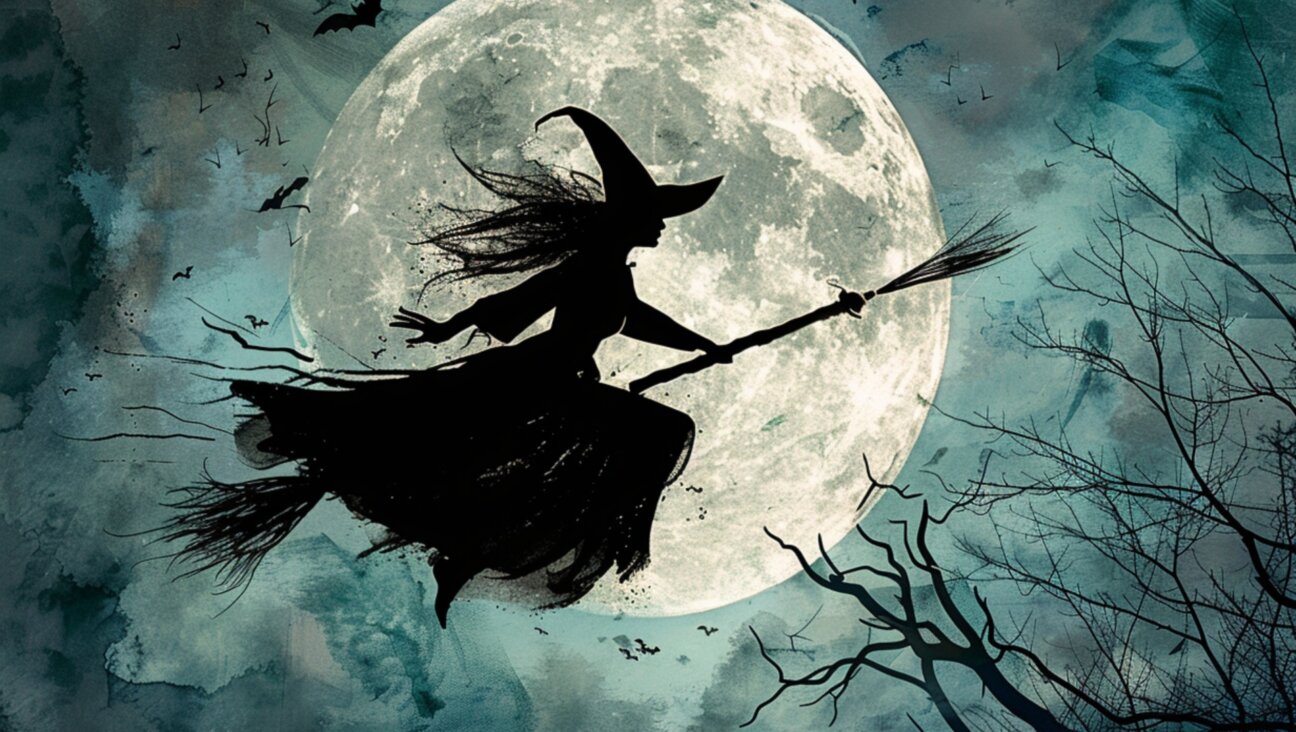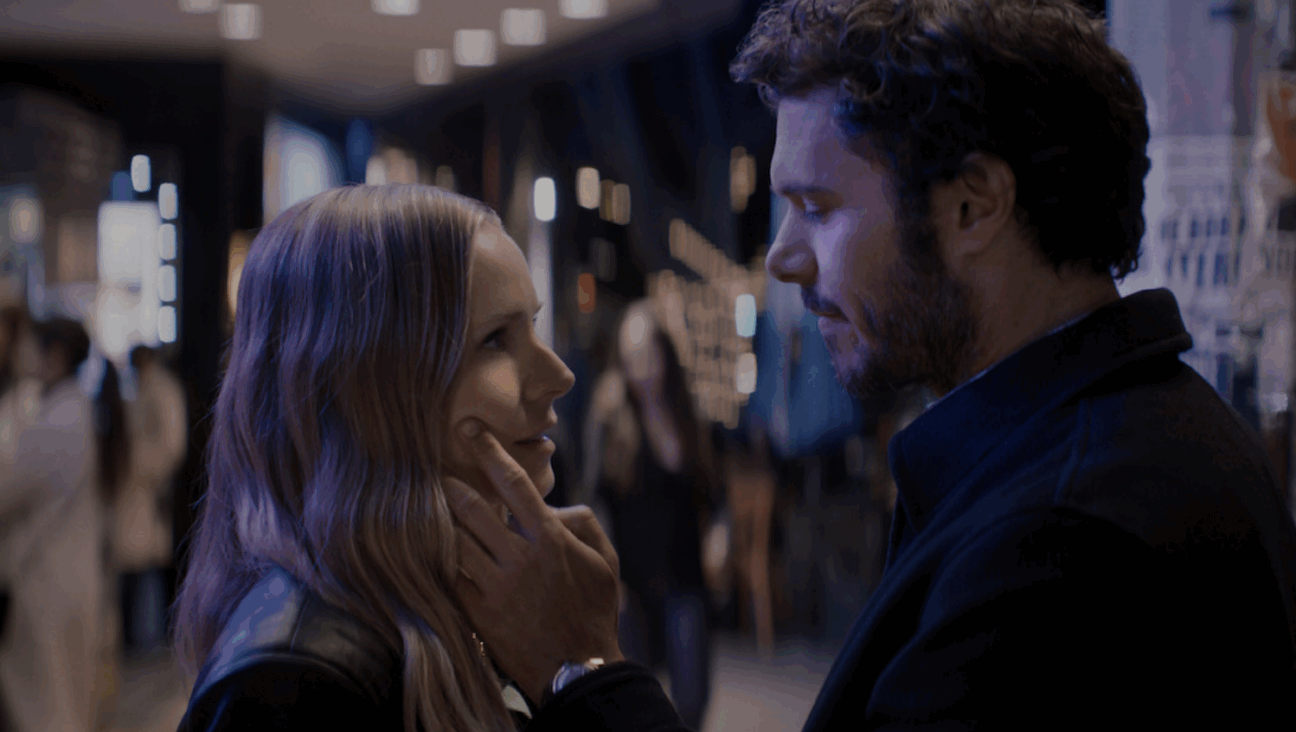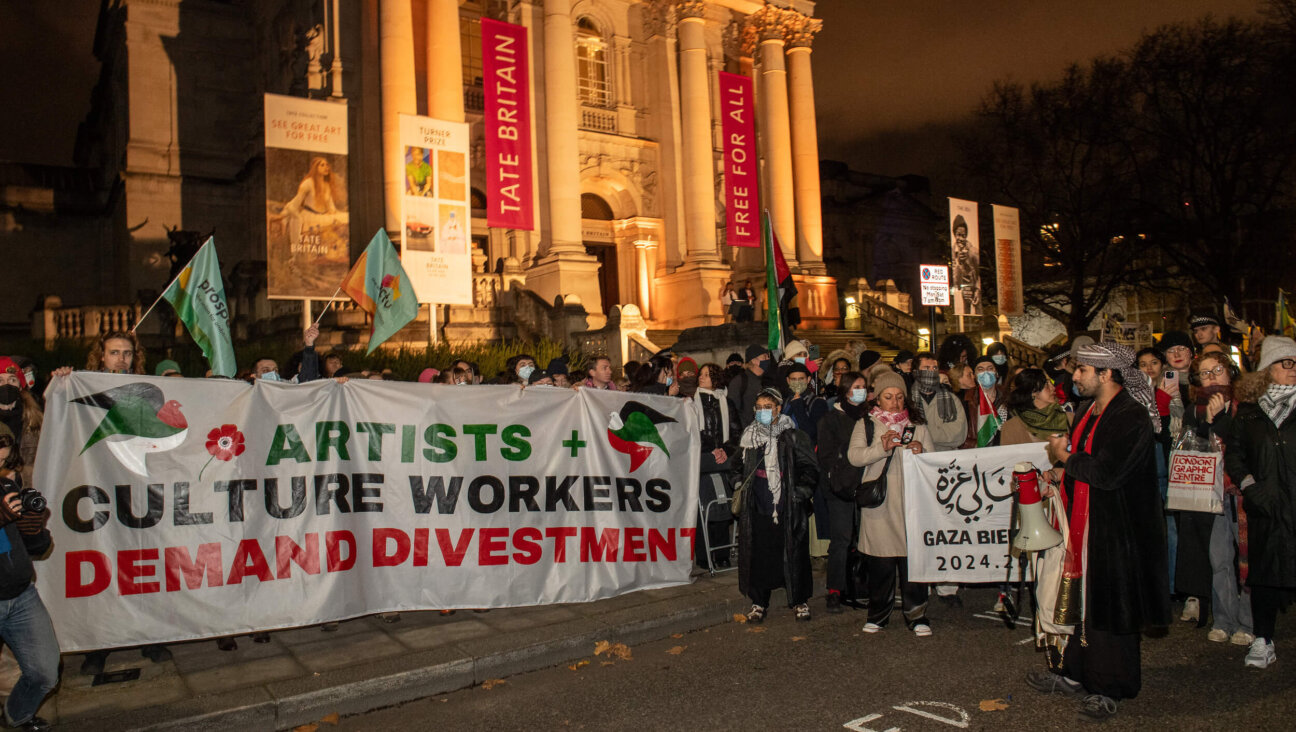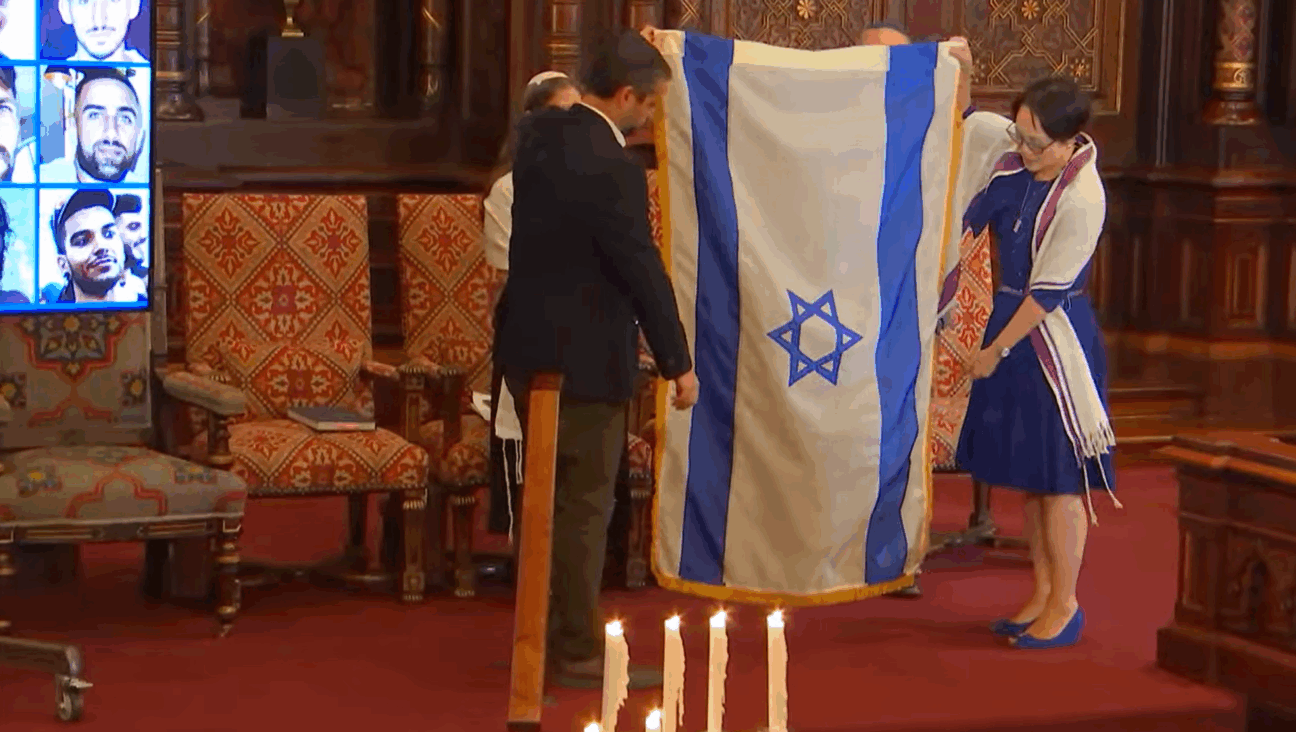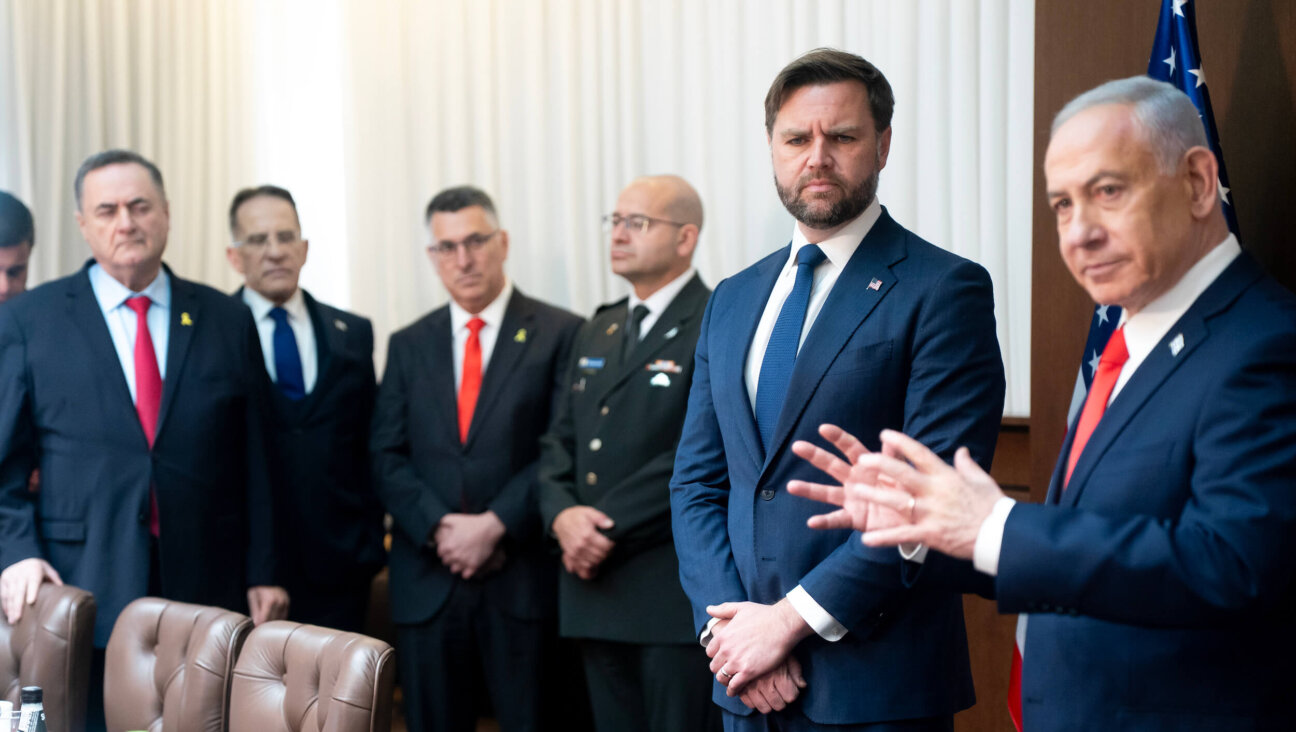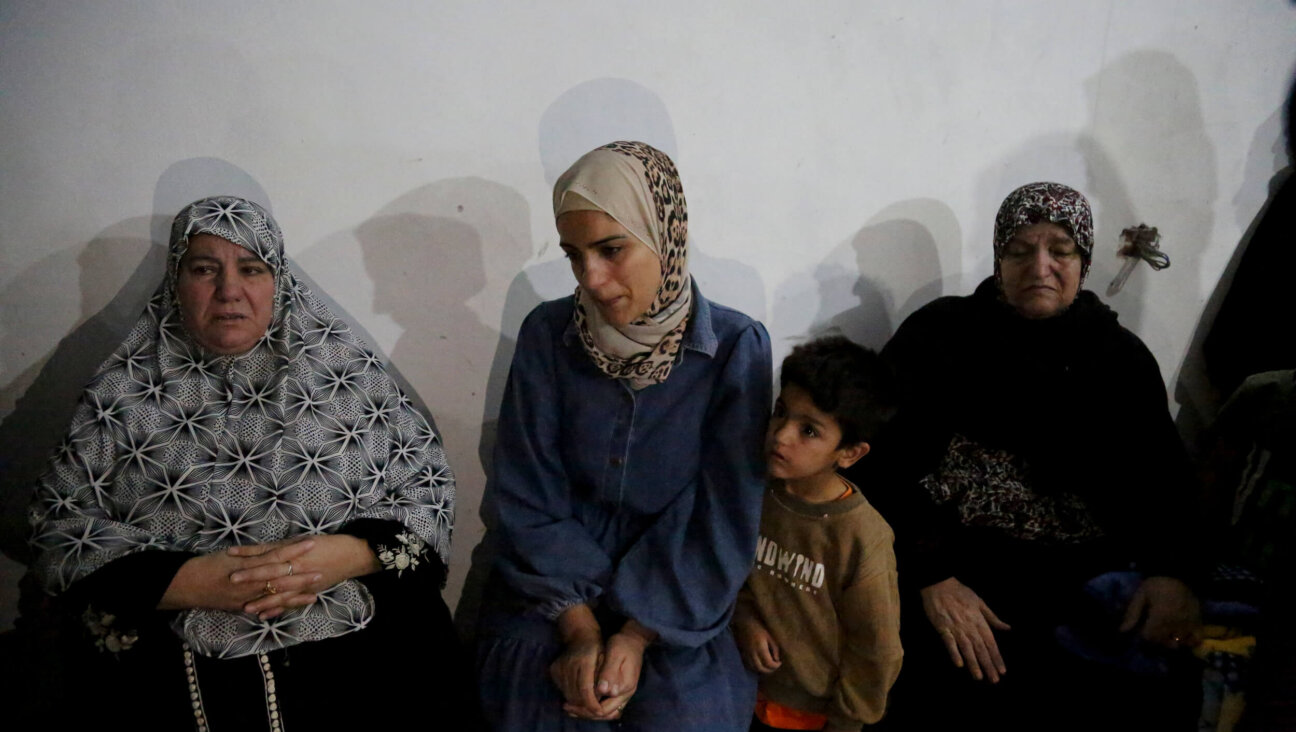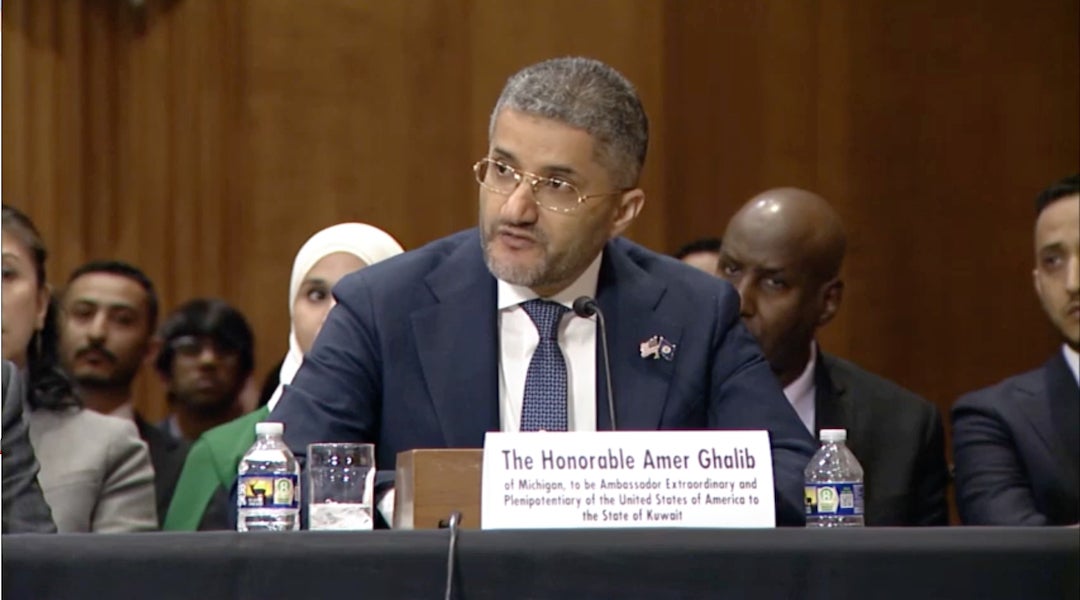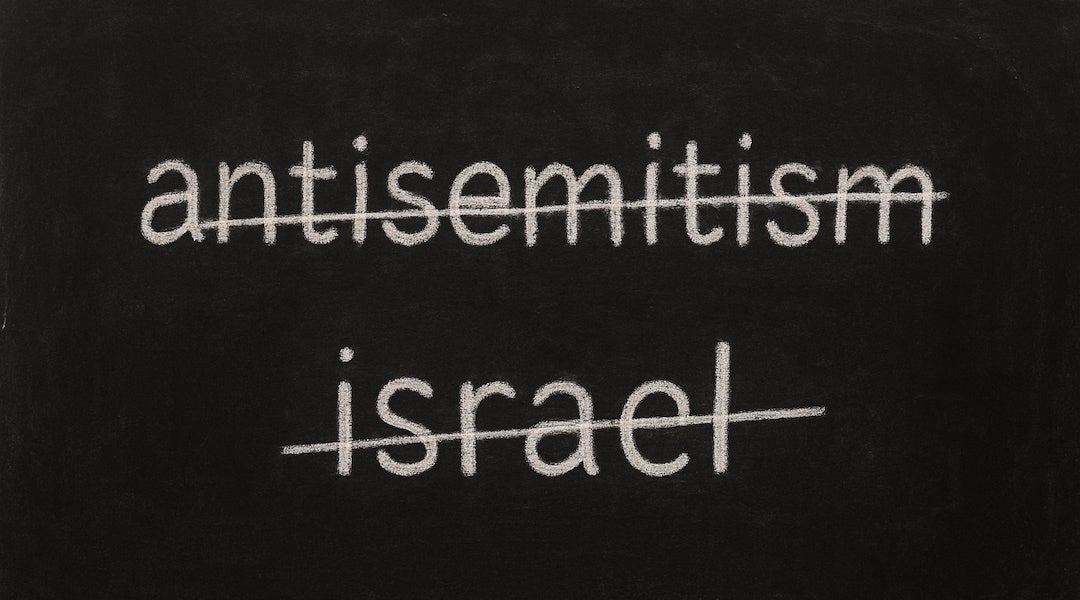Lynne Avadenka’s Triumph of the Imagination

Image by Courtesy of Yeshiva University Museum
These days, we can’t seem to escape bombast or bloat. It’s all about us: on the news, in social media, at the movies and especially in the universe of museums, where the notion that bigger is better has taken hold of the curatorial imagination and won’t let go. Finding exhibitions that practice – and reward – restraint is no easy matter.
But, happily, they do exist. “How a Poem Begins,” at the Yeshiva University Museum in Manhattan, is one of them. Visually arresting and thought-provoking, it showcases the work of printmaker Lynne Avadenka and the ways in which her artistic idiom has been profoundly influenced of late by the life and poetry of Rahel, the Russian-born writer who found her voice and calling in the Yishuv, pre-state Israel.
In the gallery, whose walls are painted in colors that soothe rather than startle, word and image inhabit the same plane; instead of competing, they complete each other. “How a Poem Begins” enables us to see what happens when poetry takes flight, and language – Hebrew, in this case – blossoms into a visual experience.
As spare and lean as Rahel’s determinedly modern, stripped-down poetry, the exhibition contains just a handful of works. Yet it doesn’t feel thin or underpopulated. The scale of things is just right. You feel welcomed, invited in and enveloped – almost as if you’ve stepped into the middle of a Japanese folding screen.
As it happens, Avadenka’s show does contain a folding screen. The piece, which is called “All My Paths Twist,” and whose title is derived from one of Rahel’s poems, sits prominently in the center of the gallery. An exercise in the geography of language, it beckons, summoning you to walk around it, to turn your head sideways, to take the measure of its folds. Fragments of text, culled from an atlas written in Hebrew, assume the shapes of a half-moon and a rectangle; a photograph of a vibrant pioneer woman – a chalutza – is fashioned into strips while the individual elements of that proud Hebrew noun – here a chet, there a vov – are gradually disclosed until they form a whole.
This work and the others throughout the gallery call for – indeed demand – close reading. You’re apt to miss out if you stand too far away. The nearer you get to the artworks’ surfaces, the more you see. Geometric shapes turn out to be bits and pieces of Hebrew letters; borders reveal themselves as splices of landscape photography; Rahel’s handwriting forms the ground from which hundreds of modern Hebrew words spill onto the page.
Much like a palimpsest, drafts of the poet’s work appear in “Bound to My Life by a Thousand Mysterious Threads,” a multimedia installation fashioned on site as Avadenka worked with the exhibition’s designer, Yvette Lenhart, to assemble it. Rahel hovers as pages of a Hebrew grammar book unspool across the surface of an entire wall. Newfangled words – sociology, civil engineering, automobile – tumble forth. They’re accompanied, or, better yet, held in check, by specimens of the Holy Land’s age-old flora and fauna, which, neatly encased in protective plastic covers, peek out from wooden catalog card drawers. Books that relate to the Yishuv – Baedeker’s “Palestine and Syria,” with a jaunty red cover; Daniel Persky’s earth-toned volume “Speak Hebrew” (“Dabru Ivrit”); the somber mien of “Report, Palestine Royal Commission of 1937” – pop up now and again. Each volume is perched on its own little ledge, punctuating the flow of nouns, verbs, adverbs and adjectives that spreads across its surface and adding both depth and rhythm.
You can interpret the piece as Avadenka’s imagining of the kinds of books the poet might have encountered in the first two decades of the 20th century; perhaps she intends it as an homage. Then again, “Bound to My Life by a Thousand Threads” can also be understood more literally as an assemblage of printed matter that influenced Avadenka’s perspective on the modern Jewish experience.
Either way, what, in different, less skillful hands might run the risk of being a shade too twee reads as a witty, playful assertion of a relationship between the two artists. The installation also brings home the importance of context, the historical container or frame within which to situate Avadenka’s work and that of Rahel before her.
History, it turns out, is everywhere on display in the gallery; each piece, to one degree or another, summons its presence. But that presence is gentle rather than insistent, more a matter of allusion than of narration. Here, history takes the form of art, not fact, leaving the visitor with room to maneuver, to imagine, to lose oneself, to linger a while longer.
Even after you take your leave, this exhibition stays with you. As textured as Rahel’s poetry and as layered as the landscape that inspired it, “How a Poem Begins” is a triumph of the artistic imagination.
Go. Seek it out.

